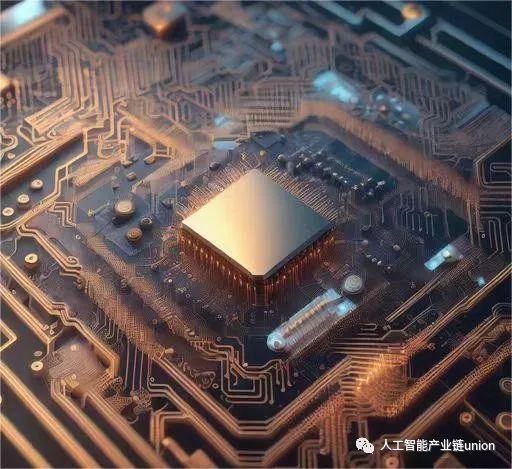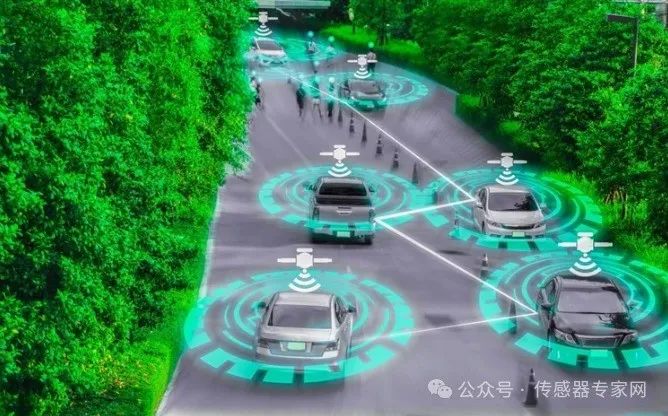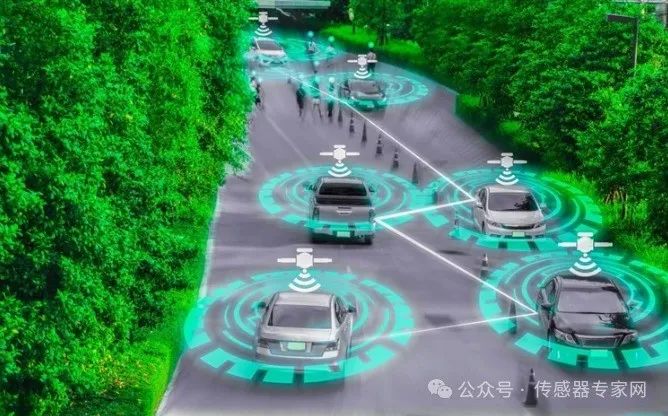
Source: Sensor Expert Network
Chip project team recruitment! ◀ Click to view!
Sensor technology is the cornerstone of modern innovation, playing a critical role across various industries such as healthcare, environmental monitoring, and consumer electronics. Its integration with smart devices facilitates real-time data collection and analysis, driving automation, enhancing efficiency, and ensuring higher safety.
As technology advances, the demand for more complex, reliable, and intelligent sensors will increase. By 2030, significant transformations in sensor technology are expected, offering capabilities beyond current expectations. This article will explore the anticipated developments in sensor technology by 2030 and review the latest research and innovations driving these advancements.
Brief History of Sensor Technology
Since its inception in the early 20th century, sensor technology has made significant strides. At that time, basic mechanical and electrical sensors were primarily used for industrial purposes, laying the foundation for future developments. By the mid-20th century, the introduction of semiconductor sensors brought major breakthroughs. These new sensors greatly improved accuracy and sensitivity, paving the way for more advanced developments.
By the end of the 20th century, Micro-Electro-Mechanical Systems (MEMS) marked another leap forward. These miniature yet powerful sensors could miniaturize without sacrificing performance, becoming game changers in the field.
The early 21st century ushered in the era of the Internet of Things (IoT), which again transformed sensor technology. Smart sensors began to emerge, equipped with wireless communication and data processing capabilities, allowing them to connect and interact with other devices.
Today, sensors are further evolving through integration with Artificial Intelligence (AI) and Machine Learning (ML), providing real-time insights that once existed only in science fiction. As more industries recognize the value of sensors in monitoring, data collection, and decision-making, the sensor market is expected to continue to grow.
Future Frontiers: Sensor Technology in 2030
Sensor technology is expected to achieve significant advancements, redefining industries and daily life. By 2030, sensors are anticipated to reach new heights in accuracy, energy efficiency, and integration with emerging technologies. The following sections explore key developments expected in the field.
1. Enhanced Accuracy and Sensitivity
By 2030, accuracy and sensitivity will be critical to sensor technology. Advances in materials science, particularly in nanotechnology, will enable sensors to detect the most subtle changes in environmental or biological conditions.
Nanomaterials are known for their unique properties, which will enhance sensors’ ability to identify minute changes, leading to earlier and more accurate medical diagnoses. These improvements will transcend medicine, revolutionizing environmental monitoring by detecting trace contaminants and changes in atmospheric conditions, thereby facilitating more effective interventions. In industrial settings, greater accuracy will enhance process monitoring, improving quality control and operational efficiency.
Image Source: ART STOCK CREATIVE/Shutterstock.com
2. Ultra-Low Power Consumption
Energy efficiency will be a hallmark of the next generation of sensors. As sensors are deployed in remote or hard-to-reach locations, frequent maintenance becomes impractical, increasing the demand for ultra-low power consumption.
By 2030, sensors are expected to operate at minimal power, potentially harnessing energy from their environment through technologies such as energy harvesting. This means that sensors can convert light, heat, or vibrations into electrical energy, extending their lifespan and reducing environmental impact by minimizing reliance on disposable batteries.
Energy-efficient sensors are crucial for the expanding IoT ecosystem, supporting continuous monitoring and data collection across various applications without the hassle of frequent power replacements.
For instance, a recent paper published in Electronics explored the practicality of energy-harvesting sensors in IoT applications. These sensors can effectively convert environmental energy (such as light, heat, and vibrations) into electrical energy. This technology highlights the potential for establishing self-sustaining sensor networks that require minimal maintenance, thus reducing operational costs across industries.
3. Integration with Quantum Technology
Quantum technology is set to become a transformative force in sensor technology, with quantum sensors expected to achieve unprecedented levels of accuracy and sensitivity by 2030. These sensors utilize principles of quantum mechanics, such as superposition and entanglement, to measure physical quantities with accuracy levels far exceeding those of traditional sensors.
This capability holds particular value in fields requiring high-precision measurements, including navigation, medical imaging, and environmental monitoring, as quantum sensors can detect and quantify phenomena at the quantum level, providing insights previously unattainable.
The combination of quantum technology and sensors will open new frontiers for scientific research and industrial applications. For example, in the field of medical imaging, quantum sensors can detect minute changes in magnetic fields, enabling non-invasive and highly detailed scans of the human body. In navigation, quantum sensors can provide ultra-precise measurements of gravitational fields, enhancing the accuracy of Global Positioning Systems (GPS).
A recent study published in Quantum Electronics explored the potential of quantum sensors in medical imaging. Researchers stated that quantum sensors can detect extremely weak magnetic fields generated by neural activity, providing a non-invasive method for monitoring brain function. This technology has the potential to revolutionize neuroimaging by providing high-resolution images without harmful radiation or invasive procedures.
4. Advanced Biocompatible Sensors
Biocompatible sensors will also become more sophisticated, seamlessly integrating with the human body for continuous health monitoring. These sensors are typically made from flexible and biocompatible materials designed to interact with biological tissues without causing discomfort or adverse reactions.
Significant advancements are expected in the coming decade, with sensors becoming smaller, more flexible, and capable of monitoring a broader range of physiological parameters.
A recent study published in Advanced Materials Technologies reported that researchers invented a 3D-printed biocompatible sensor that can smoothly integrate into wearable devices for continuous health monitoring. These sensors are made from stretchable skin-like materials that conform to the body, accurately measuring vital signs such as heart rate, blood pressure, and blood glucose levels. This research marks a significant advancement in the development of next-generation wearable health technologies.
The potential applications of biocompatible sensors are vast, especially in healthcare. Wearable health technologies such as smartwatches and fitness trackers will benefit from these advancements, providing more accurate and comprehensive vital sign monitoring. Furthermore, implantable devices for monitoring chronic conditions or delivering targeted therapies will also improve functionality and patient comfort.
5. Artificial Intelligence Sensor Networks
By 2030, the integration of artificial intelligence with sensor technology will give rise to intelligent sensor networks. These networks will be capable of autonomous decision-making, optimizing data collection, analysis, and response without human intervention.
AI sensors will not only collect data but also process and interpret data locally, reducing latency and enabling faster, more accurate real-time decisions. This capability is particularly valuable in scenarios where rapid response is critical, such as industrial automation, smart cities, and environmental monitoring.
In smart cities, AI sensor networks will be responsible for traffic management, air quality monitoring, and energy usage optimization, fostering the development of more sustainable and efficient urban environments. In industrial settings, these networks will enhance process control, predictive maintenance, and quality assurance, increasing productivity and reducing downtime.
The combination of AI and sensor networks will play a crucial role in environmental monitoring, enabling real-time responses to natural disasters and environmental hazards. As AI technology advances, its integration with sensor networks will create systems that are not only smarter but also more adaptive and responsive to dynamic conditions. This synergy will enhance our ability to monitor and manage environmental challenges with unprecedented precision and speed, ultimately improving our preparedness and resilience against environmental threats.
The rapid innovation in sensor technology is driven by continuous global research and development efforts. Researchers are constantly exploring new materials, methods, and technologies to push the limits of what sensors can achieve.
Conclusion
The future of sensor technology is filled with exciting possibilities, poised to redefine industries and improve quality of life. By 2030, advancements in accuracy, energy efficiency, quantum integration, biocompatibility, and AI-driven sensor networks will drive innovation across various fields.
Ongoing research and development efforts pave the way for these advancements, ensuring that sensors can continue to evolve to meet the demands of an increasingly interconnected and data-driven world. The next decade promises to be an exciting time for sensor technology as it continues to evolve and shape the future in ways once thought unimaginable.
References
-
Hou, K. M. et al. (2023). Trends and Challenges in AIoT/IIoT/IoT Implementation. Sensors, 23(11), 5074. DOI:10.3390/s23115074. https://www.mdpi.com/1424-8220/23/11/5074
-
Tyagi, D. et al. (2020). Recent advances in two-dimensional-material-based sensing technology toward health and environmental monitoring applications. Nanoscale, 12(6), 3535–3559. DOI:10.1039/c9nr10178k. https://pubs.rsc.org/en/content/articlelanding/2020/nr/c9nr10178k
-
Mishu, M. K. et al. (2020). Prospective Efficient Ambient Energy Harvesting Sources for IoT-Equipped Sensor Applications. Electronics, 9(9), 1345. DOI:10.3390/electronics9091345. https://www.mdpi.com/2079-9292/9/9/1345
-
Krelina, M. (2021). Quantum technology for military applications. EPJ Quantum Technology, 8(1). DOI:10.1140/epjqt/s40507-021-00113-y. https://epjqt.epj.org/articles/epjqt/abs/2021/01/40507_2021_Article_113/40507_2021_Article_113.html
-
Liu, G. et al. (2023). Biocompatible Material‐Based Flexible Biosensors: From Materials Design to Wearable/Implantable Devices and Integrated Sensing Systems. Small. DOI:10.1002/smll.202207879. https://onlinelibrary.wiley.com/doi/abs/10.1002/smll.202207879
-
Sharma, A. et al. (2022). Recent Trends in AI-Based Intelligent Sensing. Electronics, 11(10), 1661. DOI:10.3390/electronics11101661. https://www.mdpi.com/2079-9292/11/10/1661
-
Petrenko, M. V. et al. (2022). Quantum optical magnetic field sensor for neurodiagnostic systems of a new generation. Quantum Electronics, 52(2), 119–126. DOI:10.1070/qel17978. https://iopscience.iop.org/article/10.1070/QEL17978
-
Yi, Q. et al. (2021). All‐3D‐Printed, Flexible, and Hybrid Wearable Bioelectronic Tactile Sensors Using Biocompatible Nanocomposites for Health Monitoring. Advanced Materials Technologies. DOI:10.1002/admt.202101034.
☟☟☟
☞ AI Industry Chain Alliance Preparatory Group Recruitment Announcement ☜
☝
Keep up with chip industry trends
Semiconductor Industry Group Chat




